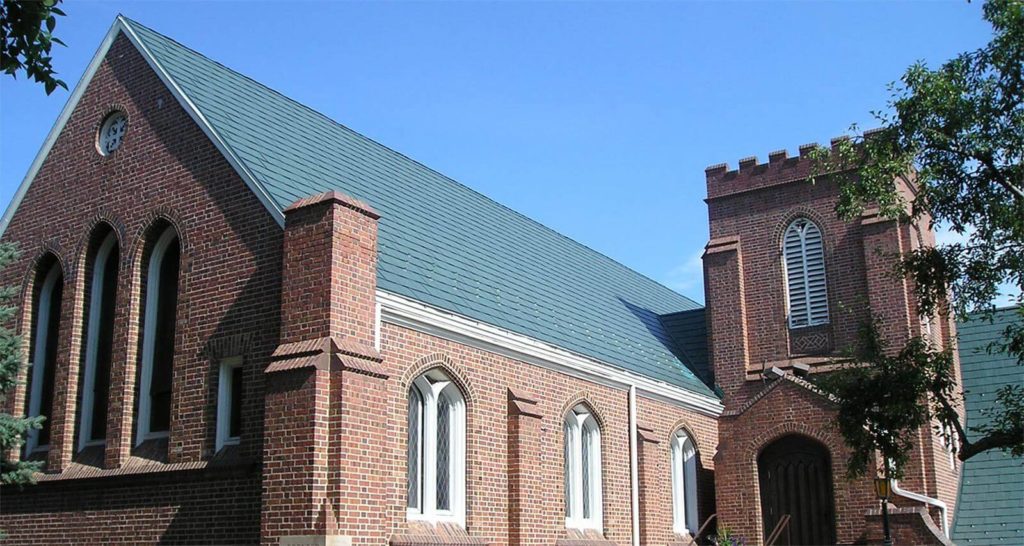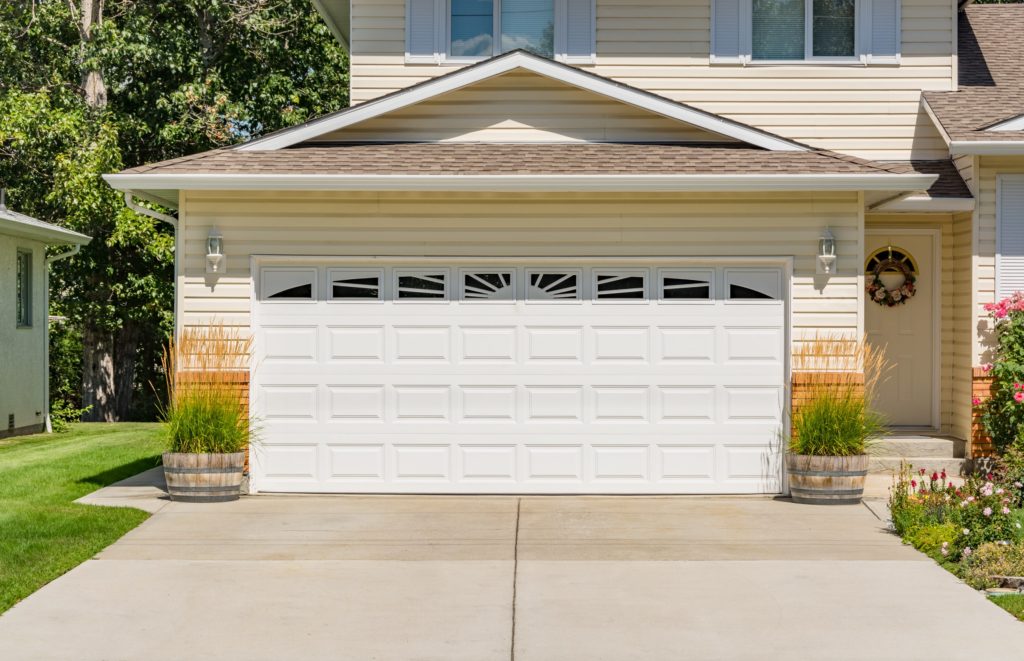Fix It Up: The Ultimate Guide to Roofing Repair Without the Fuss
Roofing repair is a crucial aspect of maintaining a home’s integrity, yet it can be an intimidating process for homeowners, especially those with little to no experience in the matter. The thought of climbing up onto the roof and dealing with all sorts of leaks, cracks, and damages can be overwhelming, not to mention the expenses that come with hiring professional contractors. But fear not, for we’ve got you covered! In this ultimate guide to roofing repair, we’ll walk you through everything you need to know to tackle those pesky roofing problems without breaking a sweat. From identifying the most common issues to selecting the right materials and tools, we’ll equip you with all the knowledge and skills you need to repair your roof like a pro. So, sit back, relax, and get ready to become a roofing repair master!
Understanding Your Roof
Your roof is one of the most important elements of your home’s structure. It serves as the first line of defense against external elements such as rain, wind, and snow. Understanding your roof is crucial for maintaining its longevity and ensuring that it continues to protect your home and its occupants effectively. A well-maintained roof can last for decades, but a poorly maintained one can lead to costly repairs and even compromise your home’s safety.
The first step in understanding your roof is knowing its components. The major components of a roof include the shingles, underlayment, flashing, and gutters. Shingles are the most visible and are responsible for protecting the roof from the elements. Underlayment is a water-resistant layer that sits between the shingles and the roof deck. Flashing is a metal component that prevents water from seeping into the roof’s vulnerable areas, such as the vents and chimneys. Gutters collect rainwater and move it away from the house’s foundation, preventing water damage.
Maintenance is key to ensuring your roof’s longevity. Regular inspections and roof repairs can help identify and prevent potential problems before they become serious. Some common issues to look out for include leaks, missing or damaged shingles, and clogged gutters. It’s also important to keep your roof free of debris such as leaves, branches, and snow, which can cause damage and block gutters. With proper maintenance, you can ensure that your roof continues to protect your home and its occupants for years to come.

Roof Problem
The Common Roofing Problems Faced by Homeowners
Roofing problems come in all shapes and sizes, but there are a few common issues that homeowners tend to face. Here are some of the most frequent roofing problems and how to identify them:
- Leaks: One of the most obvious signs of a leaking roof is water stains on your ceiling or walls. If you notice these stains, it’s important to act quickly as the longer a leak goes unaddressed, the more damage it can cause.
- Missing or damaged shingles: Shingles can become dislodged or damaged due to severe weather, age, or poor installation. If you notice any missing or damaged shingles, they will need to be replaced to prevent further damage.
- Clogged gutters: Gutters play a crucial role in directing water away from your home, but they can become clogged with leaves, twigs, and other debris. Clogged gutters can lead to water damage and even cause the gutters to detach from the roof.
- Poor ventilation: Proper ventilation is essential for maintaining a healthy roof. Without adequate ventilation, moisture can build up inside your attic, leading to mold growth and roof damage.
- Pest infestations: Small animals and insects can find their way into your roof through small openings and cause damage. If you notice any signs of a pest infestation, it’s important to address it promptly to prevent further damage.
With regular inspections and maintenance, you can catch these common roofing problems early on and prevent them from becoming more serious and costly issues.
Selecting the Right Materials and Tools for Roofing Repair
Roofing problems are like unwelcome guests – they come in all shapes and sizes, causing headaches for homeowners everywhere. But fear not, for with a keen eye and a little know-how, you can tackle these issues head-on. Let’s dive into the world of roofs and the troubles that may lurk above:
- Leaks: Picture this – water stains creeping along your ceiling or walls like unwelcome graffiti. These pesky leaks need swift attention; the longer you wait, the worse the damage becomes. This is usually caused by damaged or missing shingles, cracked flashing, or clogged gutters. Regularly inspecting your roof can help catch leaks early on and prevent further complications.
- Hail Damage: For those living in areas prone to hail storms, this may be a common issue. Although roofs are designed to withstand harsh weather, some may experience damage from large hailstones. This can result in dented or cracked shingles, which compromises the roof’s ability to keep out water. If you suspect hail damage, it’s best to have a professional inspection and repairs done.
- Poor Installation: A poorly installed roof is like a ticking time bomb waiting to cause problems. From incorrect shingle placement to inadequate ventilation, there are many ways a roof can be installed incorrectly. These issues can lead to leaks, mold growth, and premature roof replacement. It’s crucial to hire a reputable and experienced roofing contractor for installation or repairs.
- Tree Damage: Trees may provide shade and add aesthetic appeal to your home, but they can also pose a threat to your roof. Overhanging branches and limbs can scrape and damage shingles, while fallen branches during storms can cause significant harm. To prevent tree-related roofing problems, regularly trim overhanging branches and remove dead or damaged trees near your home.
- Pests: Birds, squirrels, and other critters may seem harmless, but they can wreak havoc on your roof. They often make nests in gutters, vents, or under shingles, causing blockages and damage. Insects like termites can also cause significant harm to a roof’s structure if left unchecked. Regularly inspecting your roof and addressing any pest issues promptly can prevent costly repairs.
- Aging: As with all things in life, roofs age over time and become more susceptible to problems. Constant exposure to harsh weather and UV rays can cause shingles to crack, curl, or lose their protective granules. Regular maintenance and inspections can help extend the lifespan of your roof and catch any issues before they become major problems.
- Improper Maintenance: Neglecting regular maintenance tasks like cleaning gutters, removing debris, and inspecting for damage can lead to more significant problems down the road. It’s essential to stay on top of routine maintenance tasks to keep your roof in good condition and catch any issues early.
- Extreme Weather Conditions: From heavy rainstorms to strong winds, extreme weather conditions can wreak havoc on roofs. They can loosen shingles, cause leaks, or even lift the entire roof off a house in severe cases. Properly installing a roof with high-quality materials and regularly inspecting for damage can help minimize the impact of extreme weather conditions.
Roofing problems are inevitable, but they can be managed and prevented with proper roof maintenance and regular inspections. Don’t wait until it’s too late – stay proactive and address any issues promptly to keep your roof in top shape. And remember, when in doubt, always consult a professional for expert advice and repairs.

Roof Maintenance
Roofing Repair Techniques and Tips
Now that you’ve grasped your roof’s basics, common issues, and the art of picking the right materials and tools, let’s delve into essential roofing repair techniques and tips. Here are key considerations to bear in mind:
- Prepare the Surface: Kick off by ensuring a clean slate. Prior to any repairs, thoroughly cleanse the area. Remove debris, loose shingles, and any blockages to pave the way for a seamless fix. By doing so, you evade the chances of any further damage or disruptions while working.
- Identify the Problem: Haphazardly figuring out your roof’s concerns is a recipe for disaster. To avoid this, identify what exact issue you’re dealing with. Is it a leak, missing shingles, or cracked tiles? By pinpointing the problem, you can come up with a more effective and specific repair plan.
- Choose the Right Materials: Your roof’s longevity hinges on the materials you use for repairs. Opt for high-quality, durable products that will provide long-term solutions rather than quick fixes. This ensures that you won’t have to constantly address the same issue, saving you time and money in the long run.
- Safety First: Before beginning any repairs, ensure your safety and that of those around you. Use proper protective gear, such as gloves, helmets, and goggles. Additionally, make sure you have a stable ladder and are working under safe weather conditions.
- Follow Proper Repair Techniques: It’s crucial to follow the correct techniques when repairing your roof. This includes properly securing the new materials, using sealants and adhesives as needed, and ensuring a thorough and even application. By following proper techniques, you can ensure that your repairs will be effective and long-lasting.
- Regular Maintenance: Prevention is always better than cure when it comes to roofing issues. Schedule regular maintenance for your roof to catch any potential problems early on before they worsen. This can save you from costly repairs and extend the lifespan of your roof.
- Consider Professional Help: While some minor repairs can be done on your own, it’s always best to seek professional roofer help for more complex issues. Roofing experts have the necessary skills, experience, and tools to properly address any roofing problems and ensure a reliable fix.
By following these essential roofing repair techniques and tips, you can keep your roof in top shape and avoid any major issues. Remember to always prioritize safety, use high-quality materials, and seek professional help when needed. With proper maintenance and repairs, your roof will continue to protect your home for years to come.
DIY vs Professional Roofing Repair: Pros and Cons
When faced with roofing problems, homeowners may be tempted to do the repairs themselves to save money. While DIY repairs can be a cost-effective option, there are also benefits to hiring professional roofing contractors. Here are some pros and cons of both options:
DIY Roofing Repair
Pros:
- Cost-effective: By doing the repairs yourself, you can save on labor costs. Additionally, you may be able to find affordable materials and tools.
- Flexibility: DIY repairs can be done on your own schedule, which can be convenient for busy homeowners.
- Personal satisfaction: Successfully completing a roofing repair on your own can give a sense of accomplishment and pride.
Cons:
- Safety concerns: As mentioned earlier, roofing repair can be dangerous. Without proper safety gear and training, there is a risk of injury.
- Lack of expertise: DIY repairs may not be as effective or long-lasting as professional repairs. Without proper knowledge and experience, you may miss underlying issues or make mistakes that could lead to future problems.
- Time-consuming: Roofing repair can be a time-consuming task, especially for those without experience. It may take longer to complete the repairs, which can be a hassle for busy homeowners.

Professional Roof Repairs
Professional Roofing Repair
Pros:
- Quality workmanship: Experienced roofing contractors have the necessary knowledge and skills to do thorough and long-lasting repairs.
- Safety expertise: Professionals are trained in safety protocols and have the proper equipment, reducing the risk of injury.
- Warranty protection: Many professional roofing companies offer warranties, giving homeowners peace of mind in case of future issues.
Cons:
- Higher costs: Hiring professionals will come at a higher upfront cost than doing repairs yourself.
- Less flexibility: Scheduling repairs with professionals may not always be convenient for busy homeowners.
- Finding a reliable contractor: It can be time-consuming and challenging to find a reputable and trustworthy roofing contractor. Research and referrals are essential in finding the right one for your repair needs.
Ultimately, the decision to choose a DIY or professional roofing repair service depends on your level of expertise, budget, and time constraints. For complex or dangerous repairs, it’s always best to consult and hire professionals to ensure a safe and effective outcome.
When to Hire Professionals for Roofing Repair
While DIY repairs can be a viable option for minor roofing issues, there are situations where it’s best to leave it to the professionals. Here are some signs that you should hire professional help for your roofing repair needs:
- Extensive damage: If your roof has significant damage, such as large holes or widespread leaks, it’s best to seek professional assistance. These repairs require expertise and specialized equipment that may not be readily available to homeowners.
- Safety concerns: Any time there are potential safety hazards, it’s best to leave the repairs to professionals. This includes steep roofs, difficult-to-reach areas, or precarious weather conditions.
- Time constraints: If you don’t have the time or resources to devote to a roofing repair project, hiring professionals can save you time and hassle. They have the necessary skills and equipment to complete the repairs efficiently.
- Lack of experience: For those without prior roofing repair experience, it’s best to avoid attempting complex repairs on your own. This can lead to mistakes or incomplete fixes that could cause more significant problems down the line.
- Insurance requirements: If you’re filing an insurance claim for roofing damage, it may be necessary to hire a professional contractor. Many insurance companies require repairs to be done by licensed and insured contractors.
Remember, it’s always better to err on the side of caution and seek professional help if you have any doubts or concerns about your ability to do a roofing repair properly. It can save you time, money, and potential safety risks in the long run.
Roof repairs are an essential part of maintaining a healthy and protective roof for your home. By understanding common roofing problems, selecting the right materials and tools, and following proper techniques, you can successfully complete repairs on your own or with the help of professionals. Remember to prioritize safety and regular maintenance to prevent future issues and prolong the life of your roof. With these tips and information, you can confidently tackle any roofing repair that comes your way. So, keep these tips in mind and take care of your roof to protect your home for years to come. Keep learning and improving your skills as a homeowner. After all, the more knowledge you have, the better equipped you will be to handle any roofing issues that may arise.
https://www.google.com/maps?cid=465871782046421571




